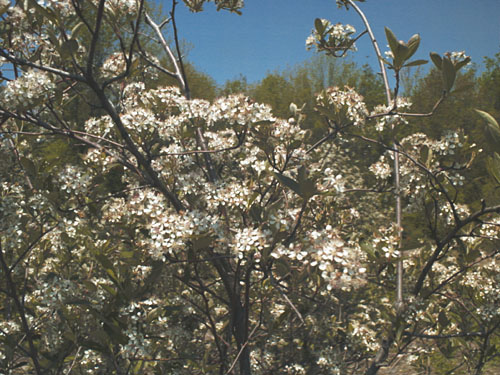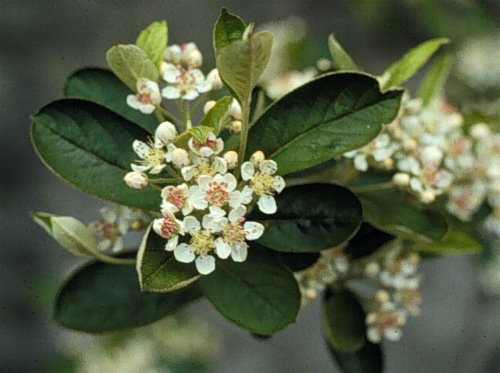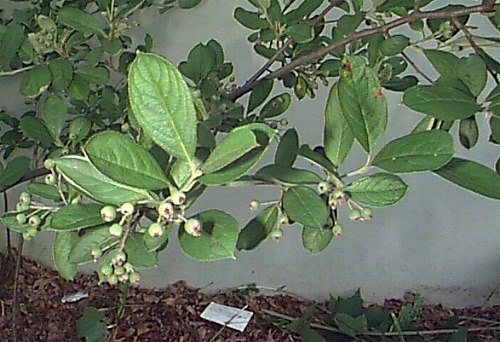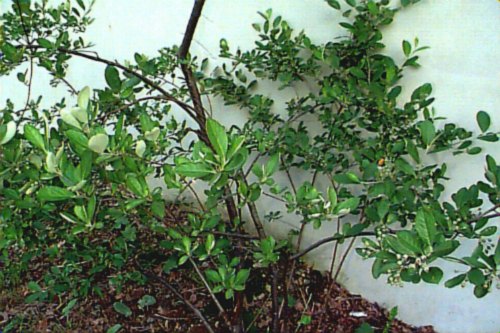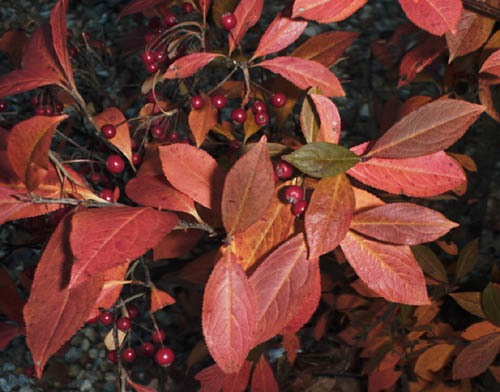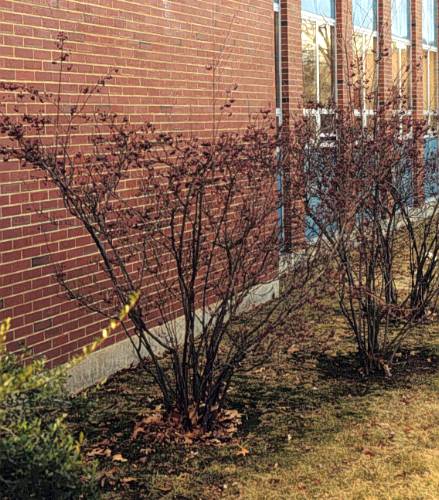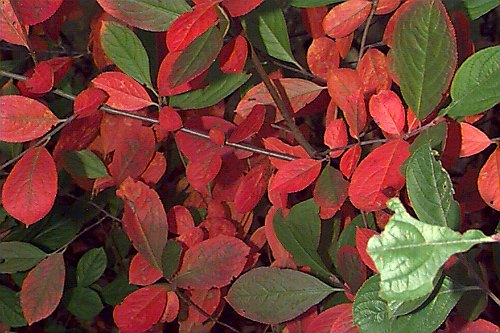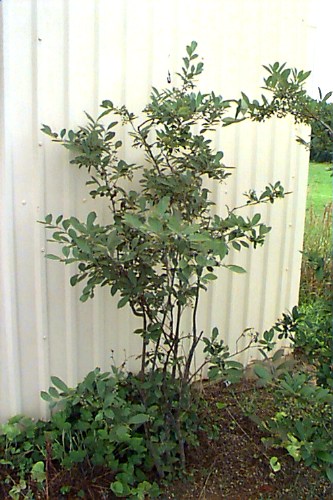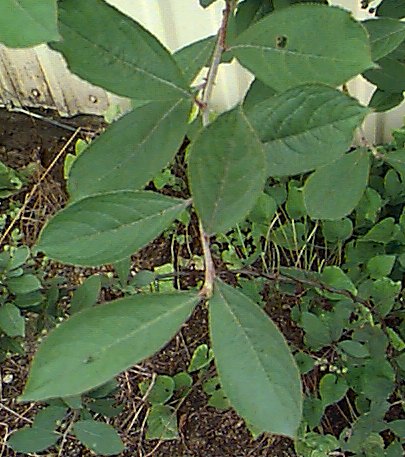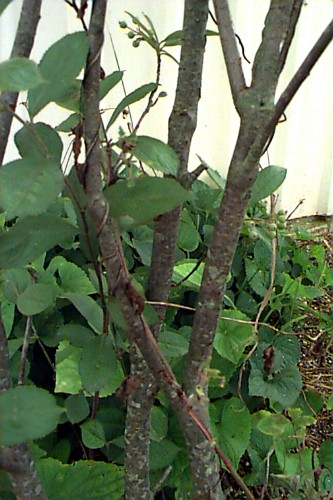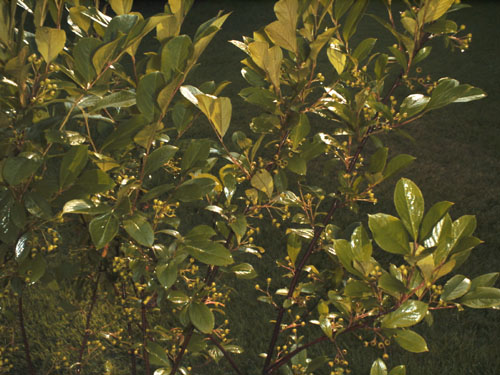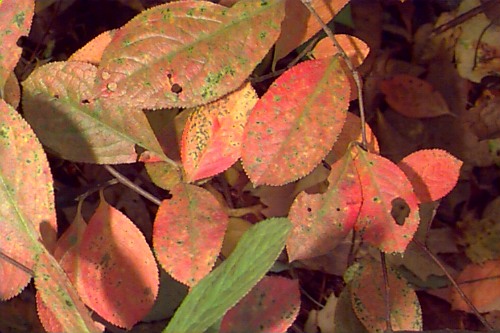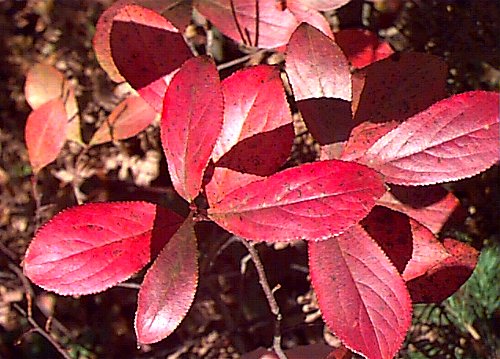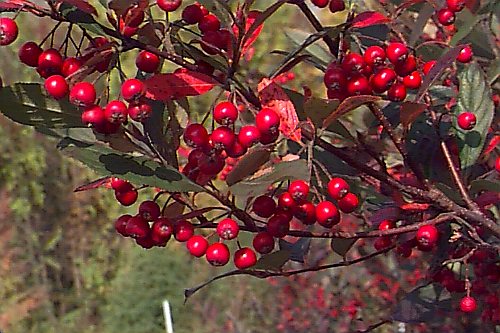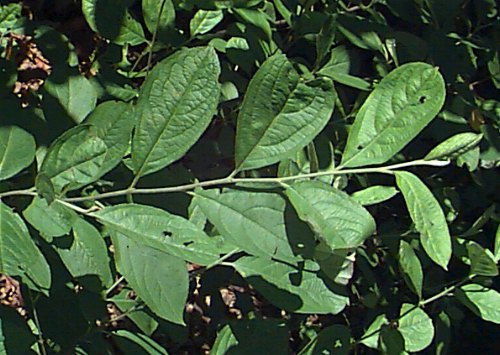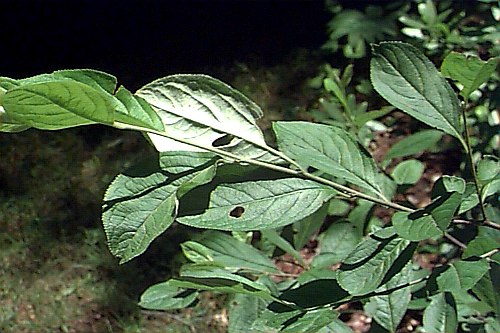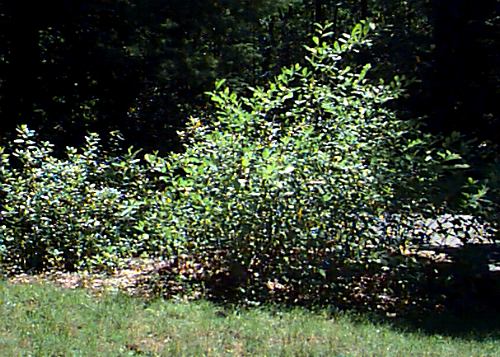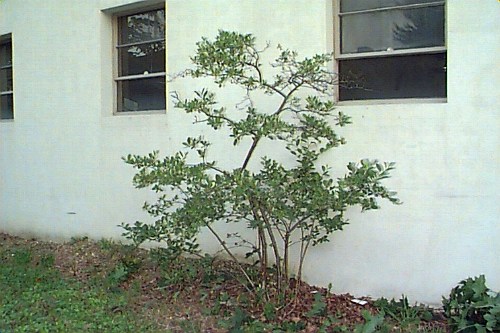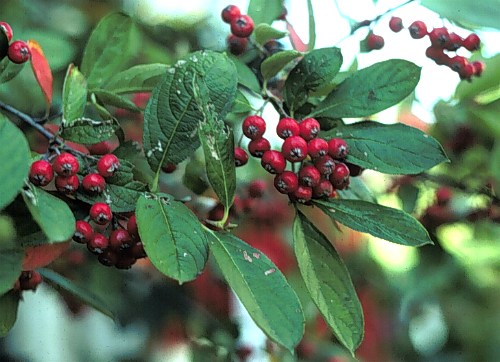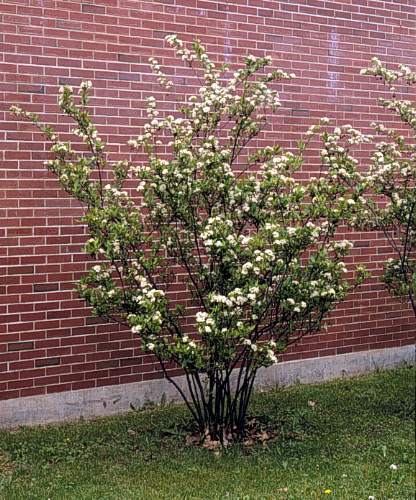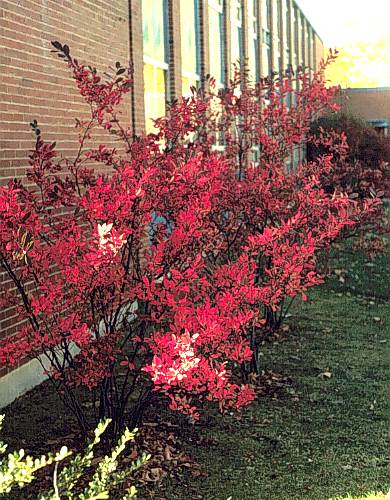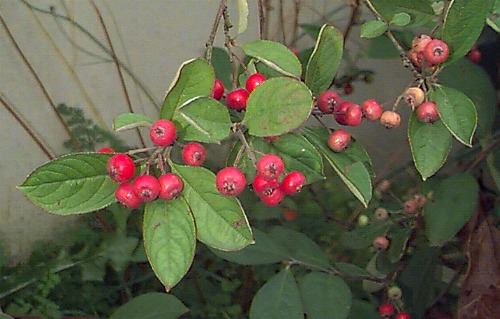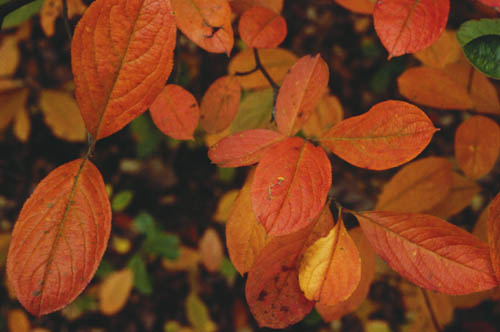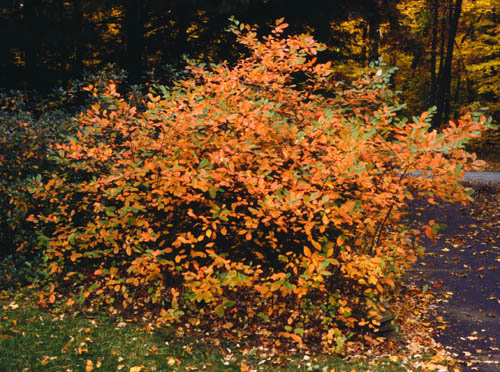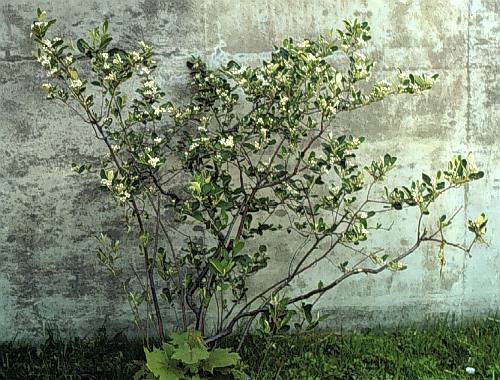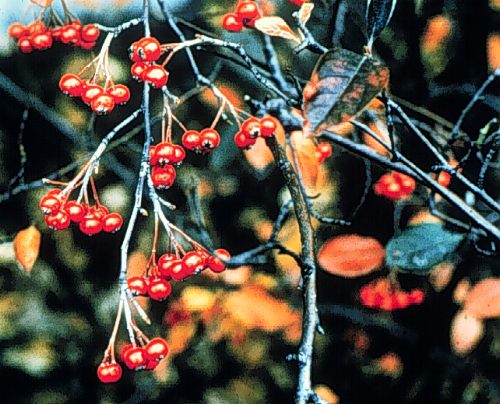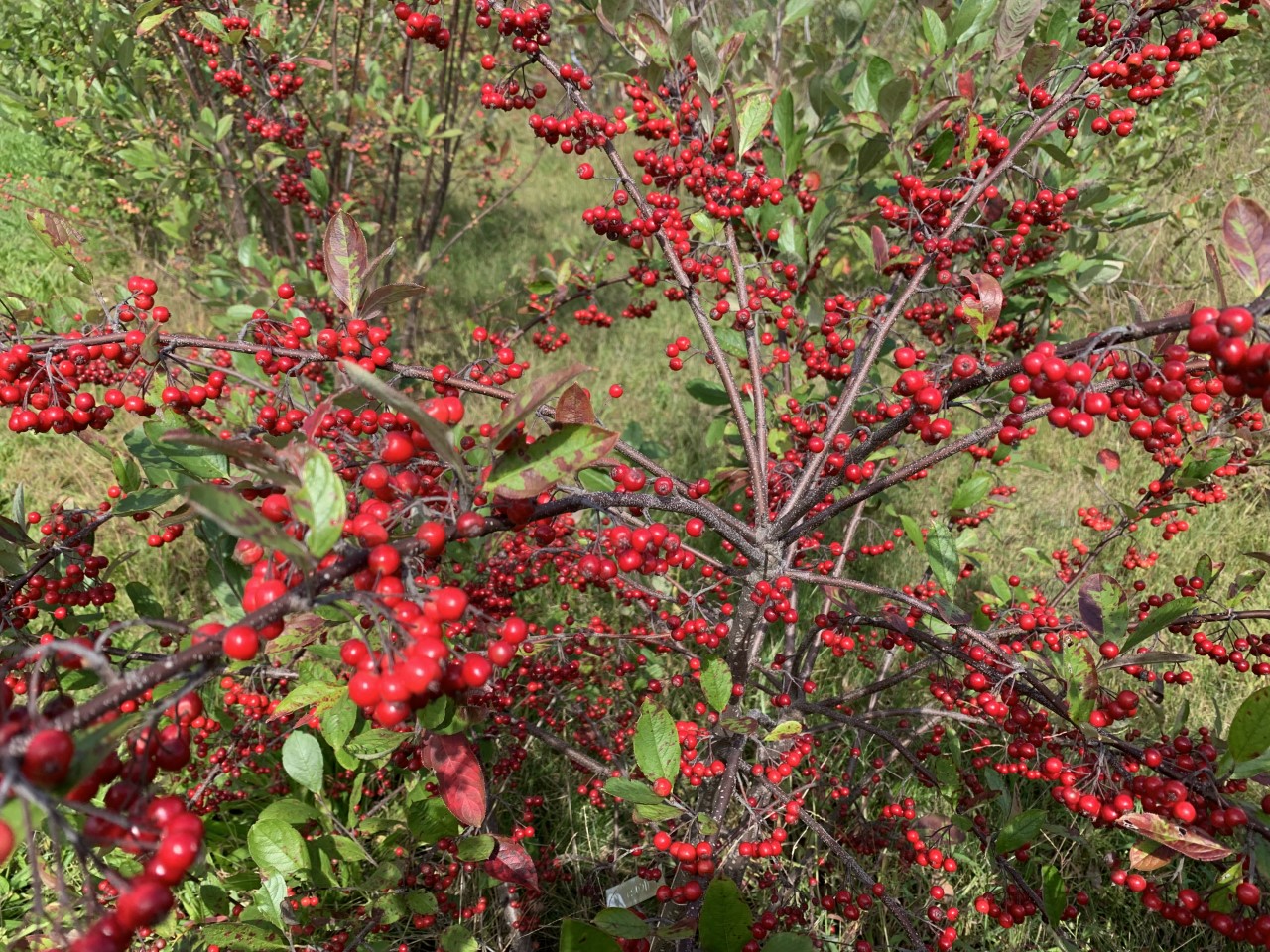Aronia arbutifolia
Red Chokeberry
Rosaceae
ExpandHabitat
- native throughout most of the eastern United States and into parts of southern Canada
- zone 4
- found in various conditions from dry hillsides to wet, almost swampy areas
Habit and Form
- 6' to 10' tall and 3' to 5' wide, deciduous
- a suckering, spreading, colonizing shrub with numerous, slender stems
- individual plants tend to have a very upright, narrow form and can be sparsely branched at the base
- texture is medium
Summer Foliage
- alternate leaves are obovate, 1.5" to 3.5" long and 0.5" to 0.75" wide
- shiny, dark green or medium green on upper surface and fuzzy gray-green on the underside
- fine, even serrations along leaf margin long the margin
Autumn Foliage
- one of the best shrubs for brilliant fall color
- intense, shiny, raspberry to crimson, with purplish highlights. Can also have some orange mixed in, especially in shady sites
Flowers
- many clusters of small, white flowers in early May
- bloom is not overwhelming, but add to the plant's multiseason interest
- flowers last about a week
Fruit
- red pome, 0.25" diameter, in flat clusters
- effective from September into December
- birds will eat the fruit, but prefer other fruits first
Bark
- brown, not important due to small stem diameter
Culture
- full sun is needed for strong flowering, fruiting and intense red foliage color (good fall foliage in shade, but not as red)
- tolerant of partial shade
- soil adaptable; tolerates both dry and wet sites
- easily transplanted and established
Landscape Use
- excellent for fall foliage effect
- multiseasonal (flowers, good summer foliage, fall foliage color, persistent fruit)
- best used in mass plantings or borders
- for naturalistic plantings
- useful for bank stabilization, colonization
- could be used more
Liabilities
- can get all the problems common to the members of Rosaceae, but I have rarely seen any serious problems
- tends to spread by underground suckering
ID Features
- alternate leaf arrangement
- suckering habit
- red pome fruit
- twigs pubescent (compare to A. melanocarpa with glabrous twigs)
- buds reddish
- underside of leaves fuzzy and gray (compare to A. melanocarpa with glabrous surface)
Propagation
- easily propagated by seed, softwood cuttings and division of suckering colonies
Cultivars/Varieties
x prunifolia - This hybrid with the native A. melanocarpa is an upright-rounded shrub with white flowers that mature to deep purple fruit. It grows to 12' tall and wide and offers good red fall color.
'Brilliantissima' - This selection is commonly grown by the nursery industry, probably more so than the species. It possesses enhancements to all the desirable features of the species. It blooms and fruits heavily, has larger fruit than the species, produces very glossy, dark green foliage and dependable, intense red fall color. Most experts roundly praise this cultivar, and it may serve as a fine native substitute for the invasive, exotic Euonymus alata (burning bush).
